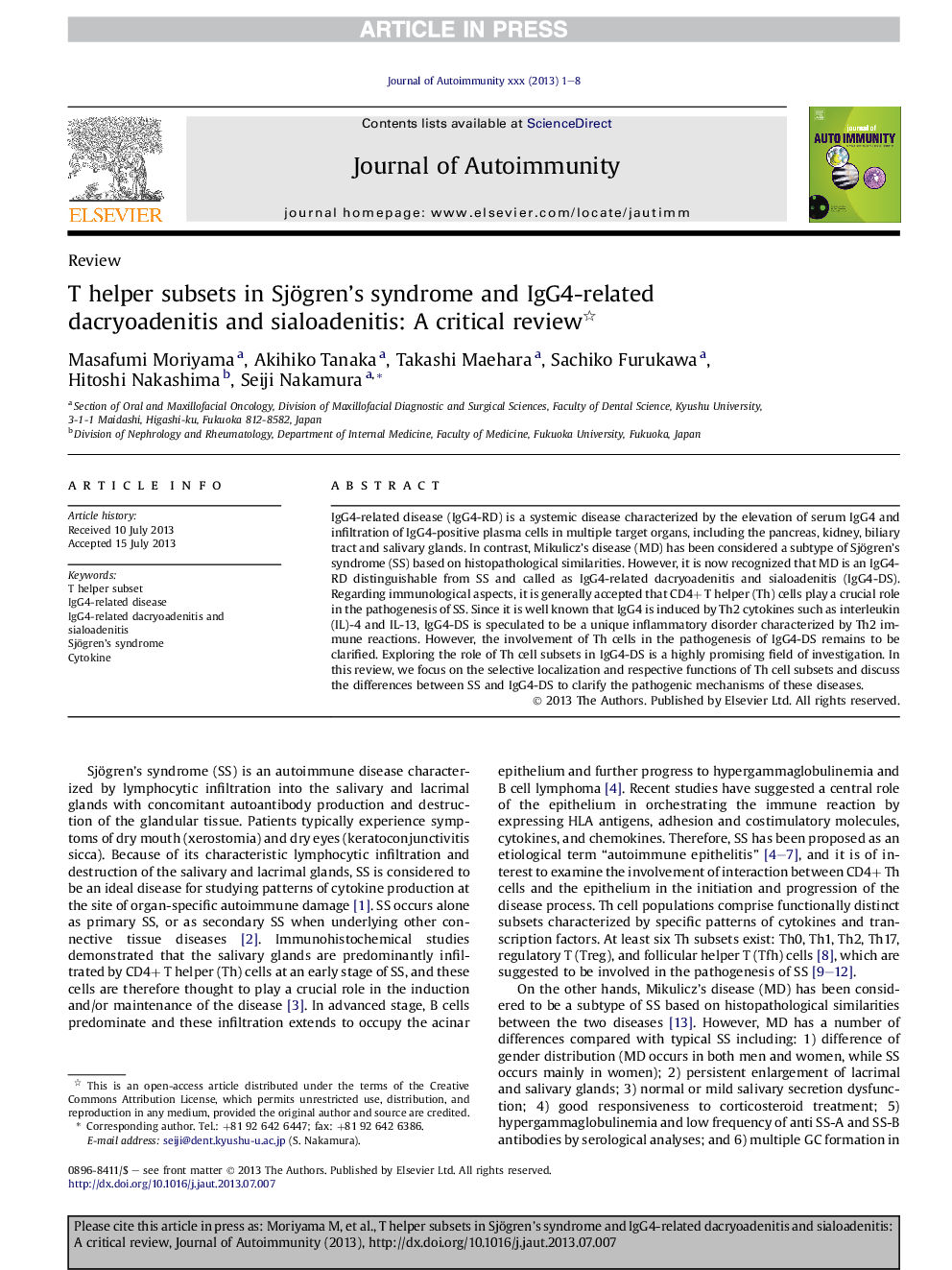| Article ID | Journal | Published Year | Pages | File Type |
|---|---|---|---|---|
| 6119272 | Journal of Autoimmunity | 2014 | 8 Pages |
Abstract
IgG4-related disease (IgG4-RD) is a systemic disease characterized by the elevation of serum IgG4 and infiltration of IgG4-positive plasma cells in multiple target organs, including the pancreas, kidney, biliary tract and salivary glands. In contrast, Mikulicz's disease (MD) has been considered a subtype of Sjögren's syndrome (SS) based on histopathological similarities. However, it is now recognized that MD is an IgG4-RD distinguishable from SS and called as IgG4-related dacryoadenitis and sialoadenitis (IgG4-DS). Regarding immunological aspects, it is generally accepted that CD4+ T helper (Th) cells play a crucial role in the pathogenesis of SS. Since it is well known that IgG4 is induced by Th2 cytokines such as interleukin (IL)-4 and IL-13, IgG4-DS is speculated to be a unique inflammatory disorder characterized by Th2 immune reactions. However, the involvement of Th cells in the pathogenesis of IgG4-DS remains to be clarified. Exploring the role of Th cell subsets in IgG4-DS is a highly promising field of investigation. In this review, we focus on the selective localization and respective functions of Th cell subsets and discuss the differences between SS and IgG4-DS to clarify the pathogenic mechanisms of these diseases.
Related Topics
Life Sciences
Immunology and Microbiology
Immunology
Authors
Masafumi Moriyama, Akihiko Tanaka, Takashi Maehara, Sachiko Furukawa, Hitoshi Nakashima, Seiji Nakamura,
